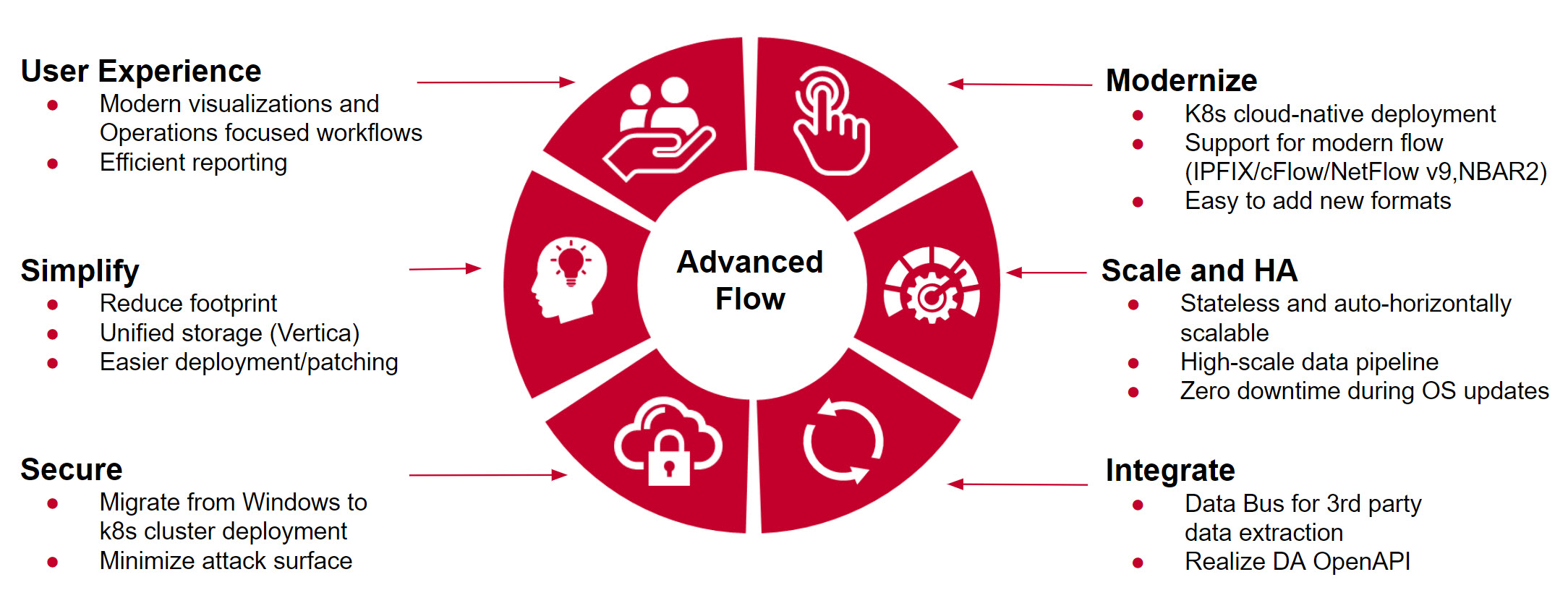What Is Flow Data and Why Is It Important?
On any given day, network administrators have to contend with significant challenges. They often struggle with key questions: How do I ensure I’m spotting traffic anomalies? How do I use our resources most efficiently? How can I intelligently plan for network capacity upgrades?
By employing network flow monitoring, administrators can gain accurate insights into these topics. Further, when flow monitoring data is correlated with other observability metrics, teams can gain insights for making dramatic improvements in network efficiency.
A flow is a set of network packets that share some identification fields. Depending on the protocol or versions used, this includes such fields as source and destination IP addresses, ports, and IP protocols.
Cisco was one of the first vendors to realize the potential of network flows. Back in the late 1990s, Cisco added a NetFlow feature to its routers. In subsequent years, many others have introduced technologies with similar approaches, but the overarching goal remains the same: To provide administrators with network visibility and enable effective traffic analysis.
How DX NetOps Modernizes Flow Management
At Broadcom, the DX NetOps team has a dedicated focus on delivering modern capabilities for Experience-Driven NetOps. Recently, the team has introduced a number of advancements that offer significant breakthroughs in deployment, operation, and flow data management.
By adopting cloud-native technologies, teams can realize significant improvements in scalability, availability, and resource utilization. To enable customers to capitalize on these advantages, the DX NetOps team has introduced key components that can be deployed via containers or pods and that leverage Kafka as a data bus for streaming. The flow management component is one of these offerings.
In the diagram below, you can get a snapshot of all the improvements customers can realize by employing DX NetOps’ flow management capabilities in microservices environments:

The Benefits of Microservices Deployment
By employing DX NetOps flow management in microservices environments, teams can realize a number of advantages:
- Efficiency. Simplification has been a key theme of this flow modernization journey. By adopting microservices, we’ve naturally seen a significant reduction in the solution footprint. In addition, this deployment model boosts component availability, and it enables the solution to scale elastically and automatically when there’s increased demand for resources.
- Agility. In addition, this new modular approach facilitates the rapid delivery and support of new flow protocols and formats, helping our customers to innovate quickly and be ready as new flow formats or vendors are introduced.
- Security. This modernization has introduced a number of security benefits. This new deployment model results in consolidated collectors and backend resources, reducing an organization’s attack surface.
- Integration flexibility. By leveraging Kafka as a metric bus and employing the Data Aggregator Open API, we’ve made it easier for customers to manage integrations and consume metrics more efficiently.
It is important to note that these modern flow components can coexist and work in parallel with traditional collectors, such as DX Network Flow Analysis. As a result, we offer customers a seamless migration path between the two solutions.
Innovative Modern Visualizations Introduced
Broadcom has invested in making flow data more accessible and consumable for the level one network operations center (NOC) operator. For example, operators can now leverage modern visualizations, including Sankey charts and device context views.
These views offer significant advantages, enabling operators to:
- Isolate traffic going to or from a given IP address, and to filter traffic by port or type.
- Investigate all hosts a user communicates with, and to track by traffic type (for example, VoIP).
- Identify if a user is running malicious tools to scan for open ports.
Conclusion
The DX NetOps product team understands the importance of adopting cloud-native technologies, such as microservices. Consequently, the team is actively pursuing further advancements, including investing in innovative observation technologies. These advancements will help our customers more readily harness new technologies.
To learn more, be sure to visit our DX NetOps page.